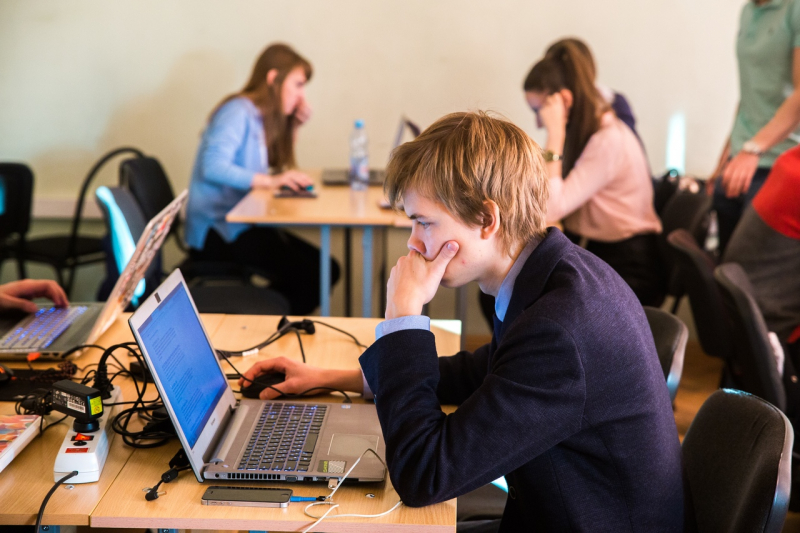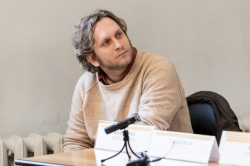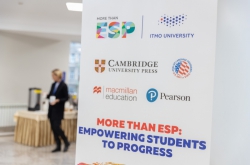Now, students have the opportunity to directly influence the quality of teaching – each subject can be assigned a grade in several criteria: how well the teacher managed to organize the curriculum, how communication with students took place and how effective it was, whether students were satisfied with this interaction. Subjects are evaluated separately, with questions on how thorough and useful were learning materials, whether subjects were taught in a high-quality way, and whether students perceive a subject as important to the overall curriculum. The questionnaire can be filled in until July 17.
Since this is the first time such a survey is being held on such a large scale at the university, students are also asked to give feedback on the questionnaire’s format and inform the organizers whether there are any aspects that they consider to be left out. What’s more, this semester’s survey includes questions on the switch to online learning; it is as of yet unclear whether or not this module will remain in the surveys to follow.
All results are processed and analyzed by the staff of the Center for Educational Management and Quality Assurance. Reports with the anonymized survey results and recommendations are then sent to lecturers and their supervisors to make decisions on the development or alteration of both the curriculum contents and teaching methods.

It’s important to emphasize that lecturers don’t have access to dynamic data, which means that they can’t see how their study group voted. Protecting respondents’ anonymity is accentuated – including by the Center for Educational Management and Quality Assurance itself. As noted by Kristina Tishkina, the center’s deputy director, ensuring full anonymity is a complicated issue to solve, but work towards this goal is underway.
“The first thing that students say is that they’d like the surveys to be completely anonymous. The complexity of it is that the entire project is tied to ISU. We’re moving towards an individual learning track , which is why each student only sees their own specific lecturers in the survey – otherwise the survey would’ve been too overloaded. Nevertheless, we’ll certainly come up with a solution in the future, as we’re also interested in not showing students’ answers directly. But we’re constantly stressing the fact that we’re divulging the data in a summarized way only,” comments Kristina Tishkina.
The main goal of the initiative is to increase the quality of teaching and make communication between lecturers and students as effective as possible.
“If we see that an overwhelming majority rate a lecturer or a subject negatively, we’ll talk to the lecturer and recommend some professional development programs,” says Kristina Ivanova, head of the Center for Educational Management and Quality Assurance. “We’ll monitor these lecturers, attend their classes to ascertain whether the situation holds up in first-hand observation, whether it changes for the better, whether a lecturer works on their professional development. We pay the most attention to what competencies they’re lacking, explore the area for improvement and put in place a development strategy – this is what it’s all about. A lecturer should be ready to change, update their curriculum, apply new educational approaches. And if in a year we see that nothing has changed, this could be a red flag for a faculty’s administration.”

That said, the first pilot surveys conducted on the Faculty of Technological Management and Innovations show that students are up for not only finding fault in but also praising the lecturers they like.
“We’re seeing all sorts of comments: both negative and completely enthusiastic. Students write that they’re happy to have the opportunity to express their gratitude to a lecturer, which they don’t always manage or find comfortable to do face-to-face,” shares Kristina Tishkina.
It has to be noted that such an evaluation system did exist before, though in a slightly different format: subject-based evaluations were connected to the open call for teaching positions and didn’t provide the full picture, while the surveying of Bachelor’s students was more aimed at gauging the quality of how the grading system was implemented. That’s why it was decided to rehaul the surveying method and format.
It is planned that the survey be conducted at the end of each semester, and in the future, it will become part of ITMO’s Avatar system. Its format is also to be modified to provide stronger motivation for students to complete it.
“We’re thinking about introducing some kind of gamification, since now the survey is implemented as a simple table and is perhaps not very interesting to complete. And as students have a lot of subjects, with different instructors delivering lectures and practical classes in some of them, the process becomes rather laborious, and we understand that,” notes Kristina Tishkina.





